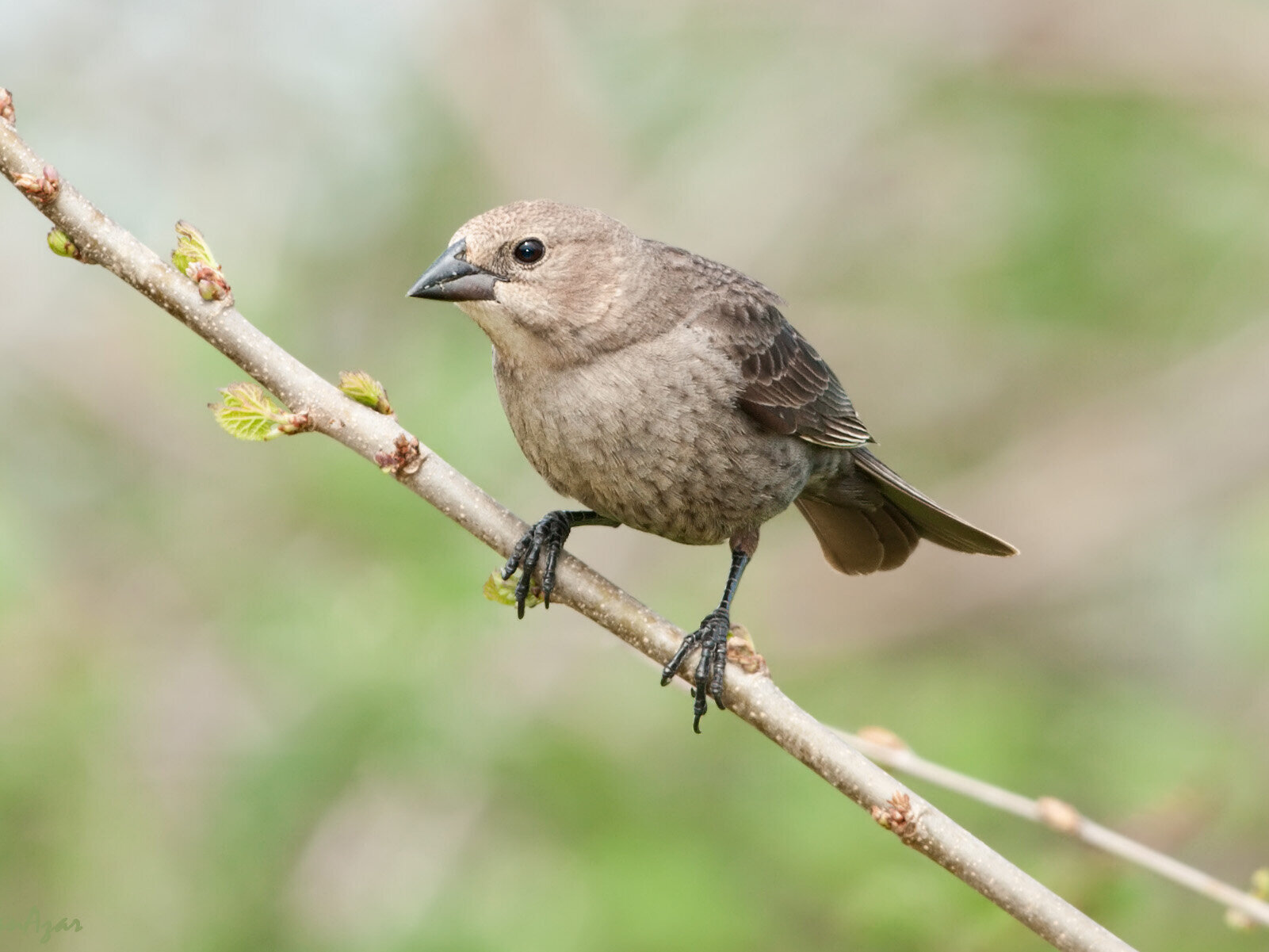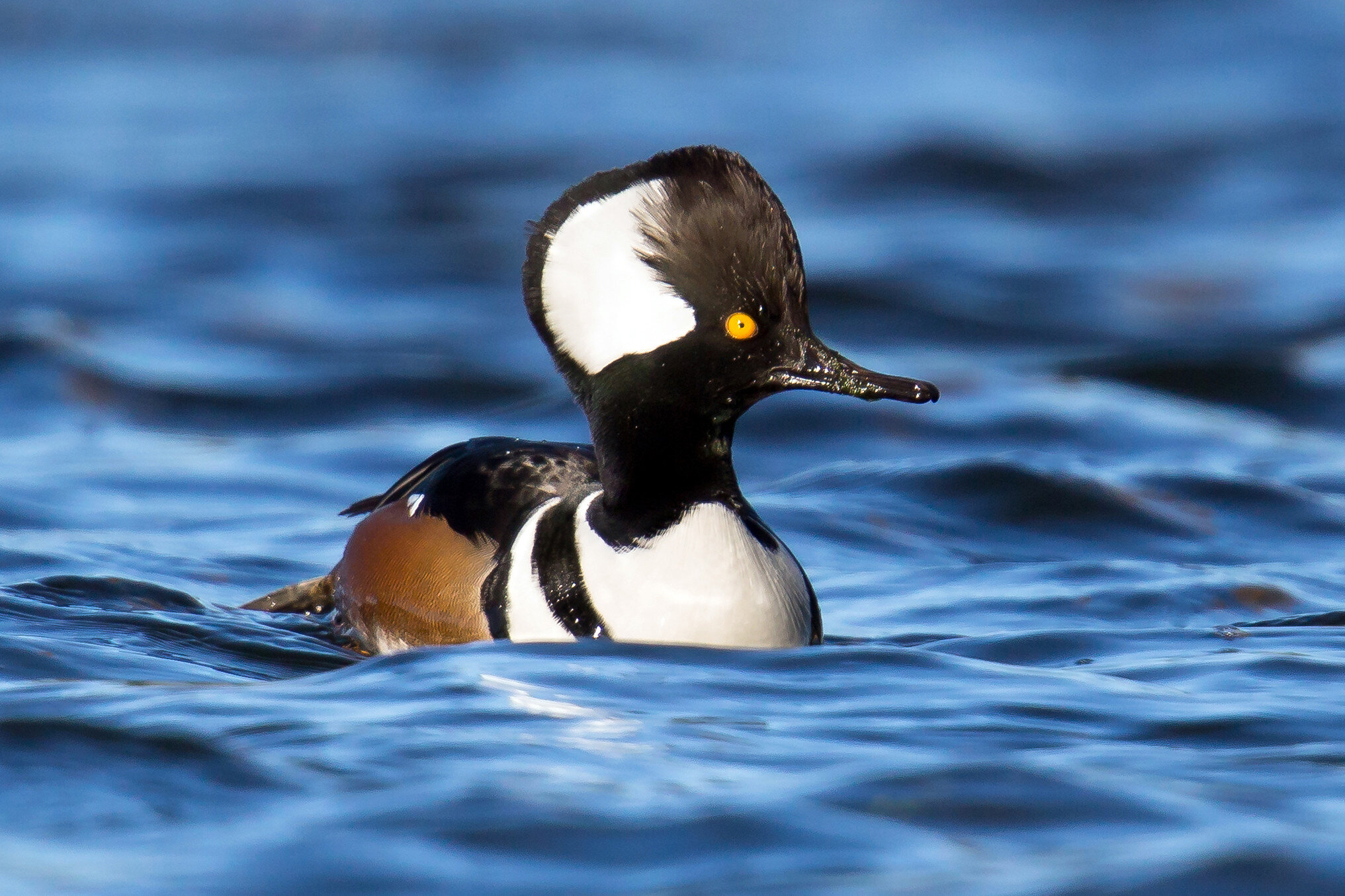In the first Breeding Bird Atlas of Wisconsin, Sumner Matteson wrote that ornithologist J. Ludwig stated that double-crested cormorants are one of our most elegant and misunderstood colonial waterbirds. Cormorant numbers have changed greatly over the past 100 years.
Sam Robbins in 1991 Wisconsin Birdlife referenced an article in the LaCrosse Tribune that reported on a flight of cormorants on April 24, 1926, “It continued for two and one-half hours, more or less intermittently, ...The flight was so large that at times it was impossible to see the sunset sky through the mass...The numbers of birds is variously estimated at from 100,000 to 1,000,000.”
Sumner also wrote that “The first documented breeding occurred in 1919 and 1921 (13 nests) in dead trees on the Okee Flowage (Wisconsin River) in southwestern Columbia County. Victor Martin, Mark’s father, told the story of his brother that shot a cormorant while duck hunting on the Marshall millpond in Dane County around 1925.
Robbins wrote that “By 1960 only three to five birds were observed per season outside of the few remaining breeding colonies.” A variety of factors contributed to their great decline including commercial fishermen that killed birds at the rookeries, large areas of dead trees in flowages that provided nesting sites eventually fell down and DDT impacted their reproduction. Robbins wrote “the cormorant became a prime candidate for the endangered species list established in 1973.”
Photo by Richard Armstrong
Mark met Tom Meier, another wildlife major at UW-Stevens Point that did his master thesis on erection of artificial platforms at the Mead Wildlife Area in Marathon County. Tom found that the platforms benefitted cormorants as well as great blue herons.
With the erection of nesting platforms, a reduction in the impact of DDT and protection by being listed as endangered, their numbers recovered and they were removed from the endangered species list in 1985. Their numbers continued to increase. Mark and Sue remember in the mid 1990s having a picnic with Mark’s parents in May at a public boat launch on Moonlight Bay near Baileys Harbor in Door County and seeing a flock of comormants that were flying just over the water, one following another, that passed uninterrupted for 20 minutes!
The first breeding bird atlas (1995-2000) reported that cormorants were confirmed in 24 atlas blocks and the recently completed Atlas II had confirmed nesting from 44 atlas blocks. Sumner estimated from his 1997 surveys that there were 10,546 pairs nesting in Wisconsin. At the beginning of this century, the U.S. Fish and Wildlife Service began controlling their numbers by oiling eggs in the Door County Area to improve fish numbers for commercial and sport fishermen. However, breeding bird atlas reported in the past five years documented over 13,000 birds nesting on Door County islands.
We will long remember an atlas trip with Pat Clark, MA board member and Dory Owen and her husband Phillip to Babe’s Island in Beaver Dam Lake last July. We counted 450 cormorants, including at least 25 young. Their nesting trees were dead or dying due to the buildup of guano. The only atlas report of breeding cormorants in Columbia County was reported in 2018 by Laura Wentz who found four adults and 10 young at the Baraboo River Waterfowl Production Area southwest of Portage.
Photo of cormorants and pelicans by Dory Owen
We have seen a few cormorants at Goose Pond in the past. This year they have been around for the past few weeks and Erica Heinig entered 60 on eBird on April 25th and this is the record high count for Goose Pond. Mark and Graham also counted 60 individuals on May 5th.
Cormorants can be seen sitting and drying off on rocks on the east side of the east pond, flying around or fishing. They are interesting birds to watch. You might first see 10 birds fishing together and 20 seconds later another 7 appear. Cornell Lab of Ornithology reports “They eat a wide variety of fish (more than 250 species have been reported), and they have impressive fishing technique: diving and chasing fish underwater with powerful propulsion from webbed feet. The tip of a cormorant’s upper bill is shaped like a hook, which is helpful for catching prey.”
The hook on this cormorant’s bill is quite noticeable! Photo by Richard Armstrong, taken at Goose Pond
At Goose Pond they are feasting on fathead minnows. The pond was bone dry in 2012 and when the water returned in 2013 it was only a month or two and before we noticed fathead minnows that might have arrived as eggs in the feathers of waterfowl.
Fathead minnows are about four inches in size and can greatly multiply. Females can lay 100 to 200 eggs per spawn and can spawn every four to five days. The eggs hatch in four to eight days and the young can breed and lay eggs later in summer. There must be thousands and thousands of fatheads minnows available for these “elegant” birds with snake-like heads.
Written by Mark Martin and Sue Foote-Martin, Goose Pond Sanctuary resident managers
Header photo by Richard Armstrong
Range map provided by AllAboutBirds.org
Cool Facts from the Cornell lab
From a distance, Double-crested Cormorants are dark birds with snaky necks, but up-close they’re quite colorful—with orange-yellow skin on their face and throat, striking aquamarine eyes that sparkle like jewels, and a mouth that is bright blue on the inside.
The double crest of the Double-crested Cormorant is only visible on adults during breeding season. The crests are white in cormorants from Alaska and black in other regions.
Cormorants often stand in the sun with their wings spread out to dry. They have less preen oil than other birds, so their feathers can get soaked rather than shedding water like a duck’s. Though this seems like a problem for a bird that spends its life in water, wet feathers probably make it easier for cormorants to hunt underwater with agility and speed.
In breeding colonies where the nests are placed on the ground, young cormorants leave their nests and congregate into groups with other youngsters (creches). They return to their own nests to be fed.
Accumulated fecal matter below nests can kill the nest trees. When this happens, the cormorants may move to a new area or they may simply shift to nesting on the ground.
The Double-crested Cormorant makes a bulky nest of sticks and other materials. It frequently picks up junk, such as rope, deflated balloons, fishnet, and plastic debris to incorporate into the nest. Parts of dead birds are commonly used too.
Large pebbles are occasionally found in cormorant nests, and the cormorants treat them as eggs.
The oldest known Double-crested Cormorant was at least 22 years, 6 months old; it was banded in Ontario in 1984 and found in Louisiana in 2006.

































